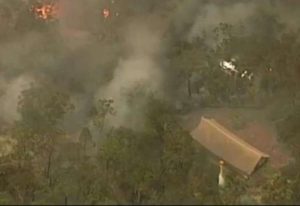Young Voices is a special project from Buddhistdoor Global collecting insightful essays written by high school students in the US who have attended experiential-learning-based courses rooted in the Buddhist teaching. Inspired by and running in parallel with BDG’s Beginner’s Mind project for college students, Young Voices offers a platform for these high school students to share essays expressing their impressions and perspectives on their exposure to the Buddhadharma and its relationship with their hopes, aspirations, and expectations.
Haruka So wrote this essay for her “Listening to the Buddhists in Our Backyard” class at Phillips Andover, a high school in Massachusetts. Haruka is from Tokyo and plans to study East Asian diplomacy in college.

Dana: The Power of Communal Learning
Dana: “The practices and virtues of generosity that allow one to build up a history of good karma.” (Crosby 2014)
Before this last spring, Buddhism had weaved its way into my life through frequent worship at the butsudan* with my family members, and lectures during introductory courses taken in traditional classroom settings. Growing up in Japan with grandparents who practiced Shinto and Nichiren Buddhism, I understood that Buddhism was an essential part of my ancestral family traditions. Yet, while I mindlessly watched my grandmother whisper prayers for our family while offering fruits, incense, and flowers to the statue of Amitabha, I never had the opportunity to explore what my grandma was doing, or how and why she made meaning out of it. In classrooms, I learned the “foundational teachings” of Buddhism, such as the Four Noble Truths, the Middle Way, the Noble Eightfold Path, and even dana (Pali, Skt. generosity); but I had never learned how these shaped Buddhists’ lived experiences, nor my own.
I have recently been engaging in an experimental liberal-arts education model called The Workshop, which immerses students in a term of collaborative project-based and communal learning that is not restrained by classroom boundaries, academic disciplines, or a traditional schedule of five courses. For my project, Listening to Buddhists in our Backyard, our group has been collaborating with Chenxing Han, author of Be the Refuge, visiting various Buddhist temples in the Merrimack Valley area, engaging in conversations with monastics, and actively listening to lived experiences shared by monks, nuns, and lay Buddhists.
The Workshop was a transformative experience. It completely altered and expanded my perceptions of Buddhism from mere lines in an introductory textbook and blurry childhood memories of grandma’s faint chantings to the liberating feelings of wholesomeness and genuine compassion derived from gift-giving. The communal and direct approach to learning allowed me to experience Buddhist values in tangible and intangible forms, as well as to understand how they are engraved in people’s reality. The Buddhist teachings are not mere scriptures, they are people’s lived lives, including those of my own ancestors.
Although I understood the principles of merit-making and dana on an academic and intellectual level, experiencing them was worth five books of written explanation. At Chua Tuong Van, a Vietnamese temple in Lowell, Massachusetts, the abbot, Thich Tham Hy, whom we addressed as Thay, spoke of how he extended his care and compassion to all beings and considered all strangers to be his own family members: if he encountered an older woman, Thay explained, he would consider her his own mother, whereas if he encountered a younger woman, he would consider her his sister or his daughter. The profound depth of selflessness and the breadth of familial care within Buddhist traditions was something of which I had been completely unaware. My previous understanding of dana—the practice of gifting—was incomplete: the shape of dana can range from giving a simple orange to offering a genuine wish for another’s security and well-being. Afterward, Thay invited us to afternoon tea, offering us Vietnamese tea, yogurt, snacks, and chocolate, and showing us how generosity takes shape within Buddhist values. The practices of giving that I witnessed at the temple encouraged me to cultivate those same habits of compassion, reflecting on how I could apply these qualities in my own community.
At another Vietnamese temple, Tinh Vien Quan Am Pagoda, a layperson, Cuu, kindly translated the nun’s words from Vietnamese into English. The nun shared with us the role of the temple, which is mainly to help people “feel better” through offering advice, and helping individuals to liberate themselves from external pressures and stresses. This act of helping others to “feel better” is psychological by nature with the purpose of promoting collective healing. The nun also explained future plans for expanding her temple in order to include more people in the space, and to ultimately help even more people “feel better.” I found true generosity in the monastics aspiration to expand the temple for the benefit of people rather than profit, like so many other institutions here in America. We saw this pattern in many other temples, where monastics similarly offer advice and host various events, all free of charge. These events included adult and youth retreats, Sunday Dharma talks, Vietnamese language classes, and counseling services that extend even to non-Vietnamese-speaking community members. At these temples, identity markers such as race, gender, and age do not matter; anyone who steps foot into the temple is treated with boundless compassion and welcomed into the community—whether for a cup of tea or for a sutra reading.
Throughout our visits, we always received gifts from the monastics, ranging from items as simple as bottled water or vegetarian spring rolls to Chinese- and English-language Buddhist texts and sutras. These simple gestures of generosity helped me to realize that generosity is not merely limited to the tangible. Instead, it is in the warm invitations from the doorsteps of Buddhist communities; it is a home-cooked Thai meal and a garden tour; it is offerings of wisdom on self-agency; it is a willing act that constantly inspires feelings of comfort and warmheartedness; it is a Buddhist teaching that has been carried across continents and generations, as well as an all-encompassing sensory experience that I would never have encountered from a homework reading of “generosity in Buddhism.”
However, dana is not a one-sided practice from Buddhist monastics. From these practices of generosity, monastics and laypeople alike generate merit and thus obtain wholesome karma for their next rebirth. For the first time, I understood the interdependent connection between my grandma’s weekly visits, her abundant offerings to Amitabha, and her persistent prayers for the health of our family. While I reflected on my grandma’s decades of merit-making, I became overwhelmed with feelings of nostalgia and genuine appreciation.
What is dana, beyond its dictionary definition? Through communal, direct learning from oral stories at various temples, I have come to a better sense of the shapelessness, realness, and application of dana from a conceptual framework: dana is what gracefully brings together a stranger, a monk, a grandma, a mother, and a granddaughter, intimately bridging relationships, communities, and generations.
* A small Buddhist shrine or altar commonly found in Japanese homes.
References
Crosby, Kate. 2014. Theravada Buddhism: Continuity, Diversity, and Identity. Hoboekn, NJ: Wiley-Blackwell.
Han, Chenxing. 2021. Be the Refuge: Raising the Voices of Asian American Buddhists. Berkley, CA: North Atlantic Books.











